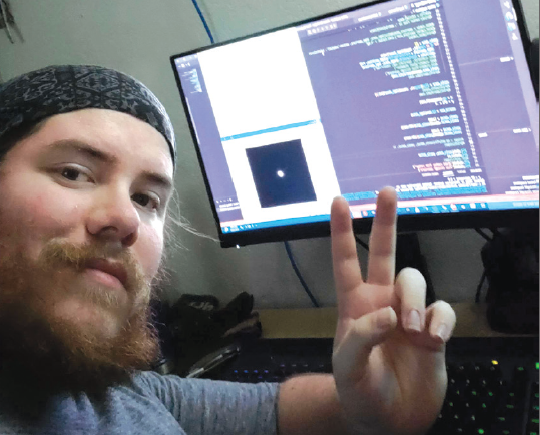Performing Non-parametric Tests on Model JWST Galaxies

For my capstone project I worked in conjunction with my advisor Professor Thomas Targett and classmate Pedro Jesus Quiñonez who was working on an associated project of generating galaxies. To do my project I was given a test image formatted in the same output method used by real computer telescope imagery systems. Working off the base of the test image I had to figure out how to write code that could progressively measure the amount of light present in the image. I was working in the Python3 coding language which is built to be modular with many different libraries of referenceable code and I was able to find an aperture photometry library that could measure the light in specified regions of the image. From there I inserted that code into a loop structure so that it could progressively change the size of its collecting area which would give me what is called the curve of growth of the galaxy. After the counting process completes, the code takes the values it calculated and arranges them into callable lists which I use to graphically plot the representation of the data. After that, the plan is to make it generate a linear fit equation that I can use to determine a feature of galaxies called their half-light radius, which is just the distance from the center of the galaxy that contains half of the light it emits. This is a tool astronomers use to approximate the size of galaxies since they don’t have hard borders.
The most interesting part of developing this code was that, apart from a couple prior coding classes, this is my first major self-directed coding project and while I had Professor Targett as a resource solving what problems arose in my code were mine to puzzle through alone. I had many times where I was stuck on a certain error or roadblock of being uncertain where to go next. Once I had my eureka moment, it was very satisfying. I think I’m most proud of how I’ve managed to make the code itself generic enough that it will be able to take in any properly formatted image and perform the calculations without any changes to how it works. This means it is not limited to working with the test image I used as the base to program it. I’m hoping that after I graduate I can take a bit of time for myself and relax after this semester. However, I will be looking into local tech companies and businesses at which I could apply what I learned from my degree.
Researchers: Erazmus Bish
Project Type: Capstone
Academic Year: 2023

